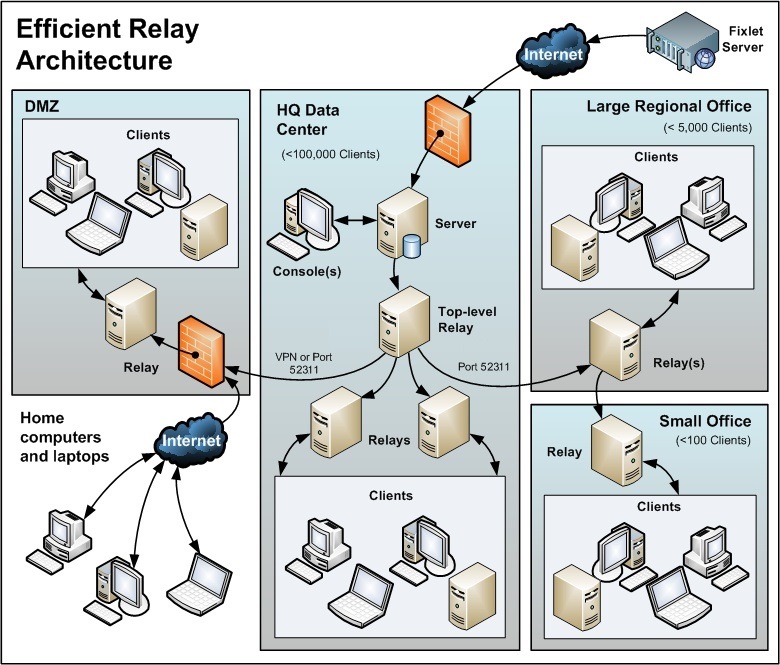Efficient relay setup
To increase efficiency and reduce latency, this company has set up a hierarchy of relays to help relieve the server load.
Each relay they add takes an extra burden off the server for both patch downloads and data uploads. Setting up relays is easy, and the clients can be set to automatically find the closest relay, further simplifying administration.

Note the following about the diagram:
- There is a dedicated server computer known as the Top-Level relay that is used to take the load off the server computer.
- All relays are manually configured to point to either the top level relay or to another relay that is closer. The general rule for configuring relays is that you want as few levels as possible to the relays unless there is a bandwidth bottleneck. Communications over thin pipes should be relay to relay. The top-level relay relieves the server, and the secondary relay allows a single download to be distributed over hundreds of clients.
- There is a relay in the DMZ set up with a special trust relationship with the server. This relay allows clients in the DMZ or on the public Internet to be managed by BigFix. The DMZ places a security firewall between the relay and the set of home computers and laptops reporting in from the Internet.
- This diagram shows a single relay in the large regional office. However, for offices with more than a few hundred clients, there will typically be multiple relays to effectively distribute the load.
- As a general rule, you should deploy at least one relay per 500-1000 clients to maximize the efficiency of the relay.